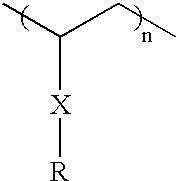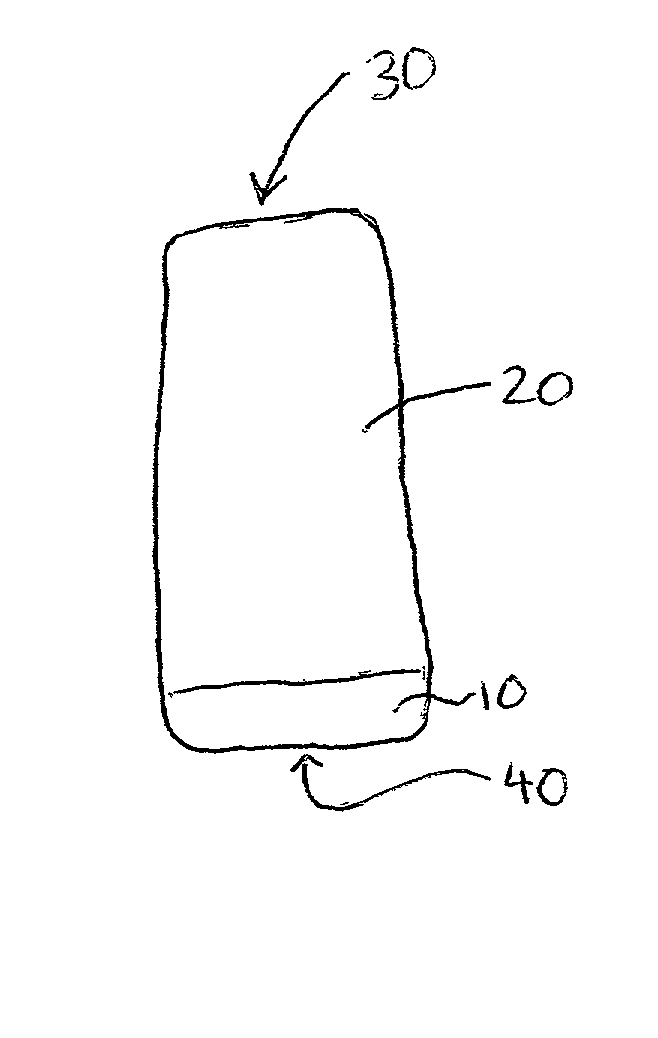Lumen occluders made from thermodynamic materials
- Summary
- Abstract
- Description
- Claims
- Application Information
AI Technical Summary
Benefits of technology
Problems solved by technology
Method used
Image
Examples
example 1
Preparation of Crosslinked Poly(methyl(3,3,3-trifluoropropyl)-siloxane)
[0022] Poly(methyl(3,3,3-trifluoropropyl)-siloxane) with about 60% of cis-stereo structure was prepared in a three-step procedure as follows: In the first step, a difunctional initiator was prepared. Two grams of diphenyl silanediol was dried at 110.degree. C. under vacuum for about 30 minutes in a round bottom flask. After cooling to the room temperature, a mixture of 7.5 ml of dry toluene and 7.5 ml of dry THF were introduced into the flask under the protection of argon. 10 microliters of styrene was also added as a indicator. Butyl lithium (2.5 M in hexane, Aldrich) was added dropwise to the reaction mixture until the solution turned slightly yellow, indicating that a difunctional initiator, lithium diphenyl silanediolate had been formed.
[0023] In the second step, 15 grams of cis and trans isomers of 1,3,5-trimethyl-1,3,5-tris(3',3',3'-trifluoropropyl)cyclotrisiloxane (cis- and trans- F.sub.3) comprising about...
example 2
[0027] A strip of cured silicone made by the process of Example 1 was warmed up to 50.degree. C. and stretched to approximately 400% of its initial length. When it was cooled down in an ice water bath having a temperature of about 1-5.degree. C., the soft stretched silicone strip crystallized in approximately one minute and became rigid. When the stretching force was released, it remained in the rigid stretched form. The same strip was then warmed to body temperature (approximately 37.degree. C.), whereby the crystalline material started to melt. The strip became soft and its shape returned to its pre-stretched form in about one minute.
[0028] A second class of thermodynamic materials for use in accordance with preferred embodiments of present invention are polymers with side chain crystalline inducing groups. One preferred member of this class of materials is poly(stearyl methacrylate). The 18 carbon side chain of the material is responsible for the formation of the crystalline stru...
example 3
Preparation of Poly(stearyl methacrylate)
[0030] In a typical experiment, 10 grams of stearyl methacrylate monomer (Aldrich) was mixed with 20 mg of benzoyl peroxide and stirred until all benzoyl peroxide was dissolved. The reaction mixture was degassed and purged with nitrogen gas three times. The mixture was then transferred into a glass tube or a polypropylene tube having the desired diameter. The tube was sealed to maintain the nitrogen atmosphere and heated to 100.degree. C. for 12 hours followed by heating at 120.degree. C. for 2 hours. The tube was then cooled down to the room temperature. The product was a white solid rod having a observed crystalline melting temperature of about 30.degree. C. The glass transition temperature of pure poly(stearyl methacrylate) is about -100.degree. C.
[0031] If necessary, additional crosslinkers, such as ethylene dimethacrylate, can be added to the reaction mixture to increase the elasticity of the resulting polymer. Furthermore, co-monomers, ...
PUM
| Property | Measurement | Unit |
|---|---|---|
| Fraction | aaaaa | aaaaa |
| Angle | aaaaa | aaaaa |
| Angle | aaaaa | aaaaa |
Abstract
Description
Claims
Application Information
 Login to View More
Login to View More - R&D
- Intellectual Property
- Life Sciences
- Materials
- Tech Scout
- Unparalleled Data Quality
- Higher Quality Content
- 60% Fewer Hallucinations
Browse by: Latest US Patents, China's latest patents, Technical Efficacy Thesaurus, Application Domain, Technology Topic, Popular Technical Reports.
© 2025 PatSnap. All rights reserved.Legal|Privacy policy|Modern Slavery Act Transparency Statement|Sitemap|About US| Contact US: help@patsnap.com



